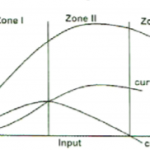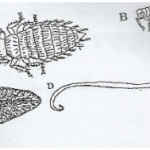KNEC KCSE Agriculture Paper 2 Question Paper / 2015 KCSE Tharaka South Joint Examination
2015 KCSE Tharaka South Joint Examination
Agriculture Paper 2
SECTION A (30 Marks)
Answer all questions in this section.
State FOUR factors considered when selecting an implement for primary cultivation.
2 marks
Name THREE types of silo used in the preparation and storage of silage.
1.5 marks
a) What is a notifiable disease as used in livestock health. (1 mark)
b) Name FOUR notifiable diseases in cattle. (2 marks)
3 marks
State FOUR disadvantages of natural mating in livestock production.
2 marks
List FOUR distinguishing characteristics of a Jersey.
2 marks
State FOUR features of an ideal rabbit hutch.
2 marks
State THREE reasons for feeding livestock.
1.5 marks
Give TWO factors that may lead to conception failure after service in heifers.
1 marks
Give FOUR uses of harrows on the farms.
2 marks
State TWO importance of isolating sick animals in the farm.
1 marks
List FOUR structural features of a good maize store.
2 marks
Give the name of the act of giving birth (parturation) in the following species of animals. (1½ marks)
i) Rabbits
ii) Goats
iii) Cattle
2 marks
Mention FOUR properties of concrete that make it suitable for constructing farm buildings.
2 marks
State THREE characteristics of colostrums that make it suitable for new born livestock.
1.5 marks
State FOUR precautions farmers should take when handling bees.
2 marks
Give FOUR reasons why many farmers in Kenya do not use artificial incubation.
2 marks
State TWO factors which influence quality of honey.
2 marks
SECTION B (20 Marks)
Answer all questions in this section.
Below are head illustrations of two breeds of pigs commonly kept in Kenya. Study them carefully and then answer the questions that follow.
A B
a) Name the breeds of pigs where heads are shown on each of the diagram. (2 marks)
i) Breed A
ii) Breed B
b) Name the type of product each of the breeds named in (a) above is kept for. (2 marks)
c) Give TWO physical characteristics which can be used to distinguish the two breeds of pigs from each other.(2 marks)
5 marks
Below is an illustration of structure used when handling animals in the farm. Study it carefully and then answer the following questions.
a) Identify the structure in the diagram. (1 mark)
b) List FIVE materials used to construct the above structure. (5 marks)
c) Name any FOUR livestock management practices that a farmer can carry out in the above structure. (4 marks)
5 marks
Study the diagram below carefully and then answer the questions that follow.
a) Identify the implement shown in the diagram C and D. (1 mark)
b) Name the parts labelled C1, C2, D1, D2 on the diagrams. (2 marks)
c) Give one advantage of using the implement C over implements D in primary cultivation. (2 marks)
5 marks
SECTION C (20 Marks)
Answer two questions in this section.
a) State and explain eight materials and equipment used during milking. (8 marks)
b) List FOUR qualities of good eggs used for incubation. (4 marks)
c) State FOUR factors affecting milk composition. (8 marks)
20 marks
a) Describe the requirements of a calf pen. (6 marks)
b) Give the advantages of a four stroke cycle engine. (5 marks)
c) Explain nine ways in which diseases can be controlled in livestock. (9 marks)
20 marks
(a) Explain the factors that influence the supply of a commodity in the market. (12 marks)
b) Discuss the principles of co-operatives. (8 marks)
20 marks





